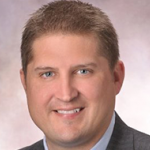Bart Murphy’s efforts to consolidate IT operations of the six divisions of the CareWorks Family of Companies worked out so well that when the company was acquired by York Risk Services Group in 2013, his new bosses asked him to scale up and perform similar duties for the companies comprising the York family.
CareWorks encompasses Ohio’s largest workers’ compensation managed care organization, third-party administration divisions, field case management, risk and safety management services, as well as a technical consulting group that Murphy also heads.
Out with the outsourcing
When he joined CareWorks as CIO in 2011, it was with the task of terminating a 15-year outsourcing relationship for the largest company in the group and bringing everything in-house. The company was not enjoying the innovation and speed to market that it needed to compete in the fast-changing healthcare-related industry.
“Everything from the data center to helpdesk to applications to applications support, audit and security was all outsourced,” he recalls. “We had to basically build that business’s assets from scratch within a nine-10-month period. And to go live, we had to both pass an external audit and pass an audit and testing exercise with our regulator on the first day.”
He also had to curtail the organizational silos that had formed in the six CareWorks companies. “There were a lot of issues from the standpoint of organizational change management just in going through that process - a lot of pain,” he recalls. Business users, who initially were skeptical in moving to a new consolidated platform, are extremely pleased with the results, he adds.
Two-week refresh cycle
Instead of new software releases two or three times a year, the CareWorks IT group is now refreshing its systems every two weeks utilizing the ServiceNow Enterprise IT Service Management Platform. That, Murphy says, allows him to automate business without having to invest lots of resources into maintaining an ERP platform, instead focusing his team on activities that are core to the business.
“The ability that business managers have to influence the platforms we have, since we went live, has just empowered the business in a way they never were empowered before,” Murphy adds. “It is just a different working environment and because of that they have been able to improve their outcomes and every one of our metrics. Both financially and regulatory, they have all improved.”
Looking ahead
Since the acquisition, he’s taken on the task of building and connecting a robust data center and network environment to deliver services to York’s 105 US and six international locations. Next on the agenda is an enterprise application strategy aimed at eliminating redundancy and fostering innovation.
Key to the long-term strategy is determining what to run in-house and what cloud services to use. “We protect a lot of our data, so we still have our private cloud, and we still are in the business of managing some of our own data centers,” Murphy explains. “But when there are applications and other components that are not core to my business and take time from my team, we can leverage external services.”




